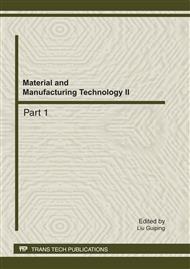p.26
p.31
p.36
p.42
p.48
p.53
p.58
p.63
p.68
Thick Hydroxyapatite Coating on Ti-6Al-4V through Sol-Gel Method
Abstract:
Hydroxyapatite (HA, Ca10(PO4)6(OH)2) powder along with other additives such as P2O5, Na2Co3 and KH2PO4 are used for biocompatible coating of Ti-6Al-4V through sol-gel method. An in-house dip coating machine was developed to control dipping and withdrawal rates of the substrate. After passivating of the samples in nitric acid, coating of HA gel was performed followed by sintering in a vacuum furnace. Characterization of the coating layer was evaluated by the XRD and SEM. Imagej software was used for analysis of the data. It was found that increasing the sintering temperature decreases the pore size, resulting in a denser structure of hydroxyapatite and decrease in surface roughness of the coating. High sintering temperatures produced cracked surface of HA due to the α to β transition temperature of Ti and its alloys. HA with coating thickness of about 100 µm free cracks was obtained for sintering temperatures lower than 800 °C.
Info:
Periodical:
Pages:
48-52
Citation:
Online since:
September 2011
Authors:
Keywords:
Price:
Сopyright:
© 2012 Trans Tech Publications Ltd. All Rights Reserved
Share:
Citation:


